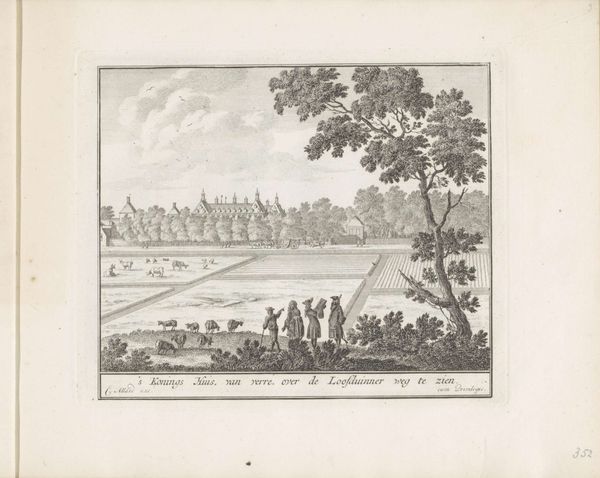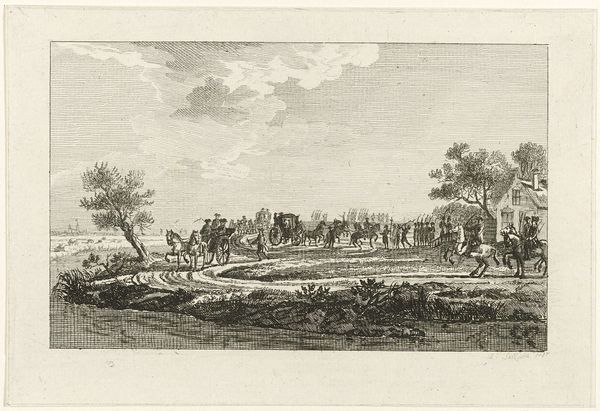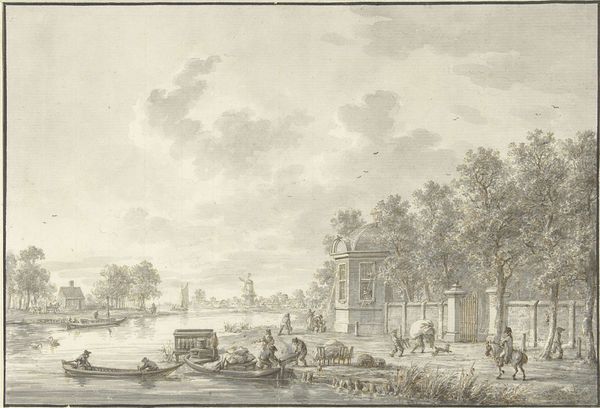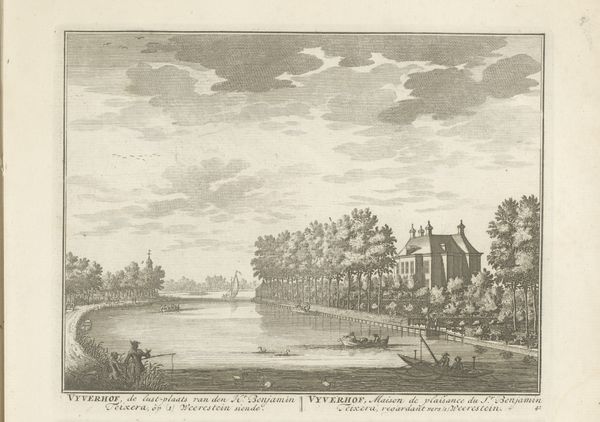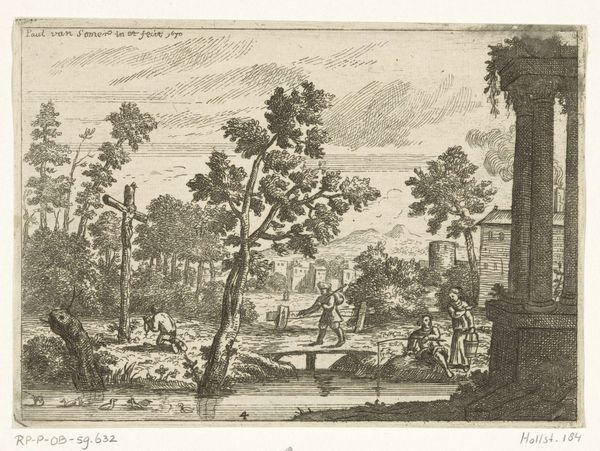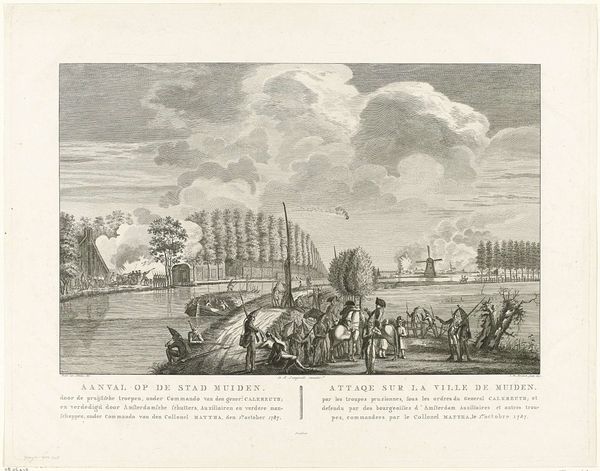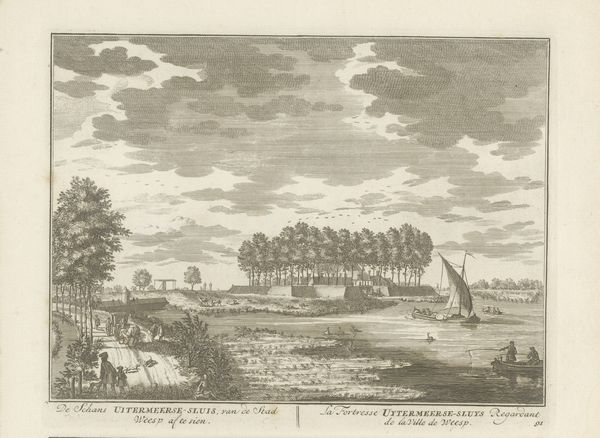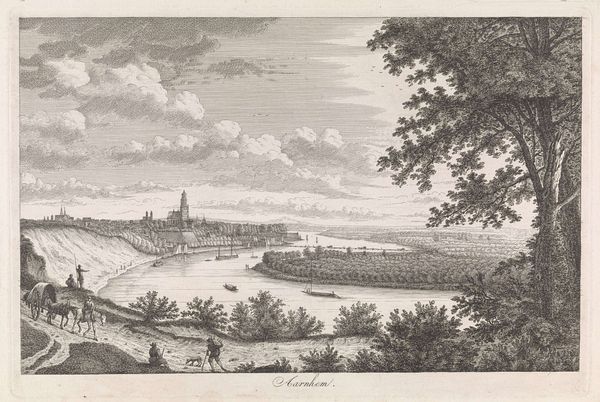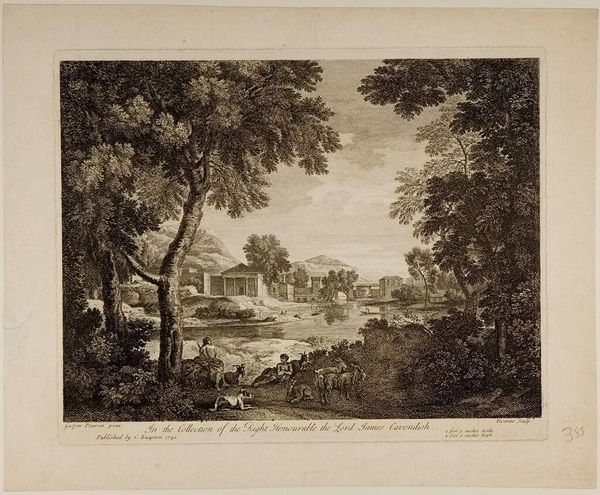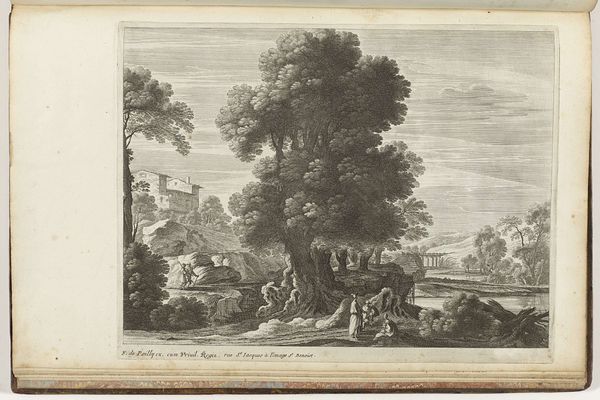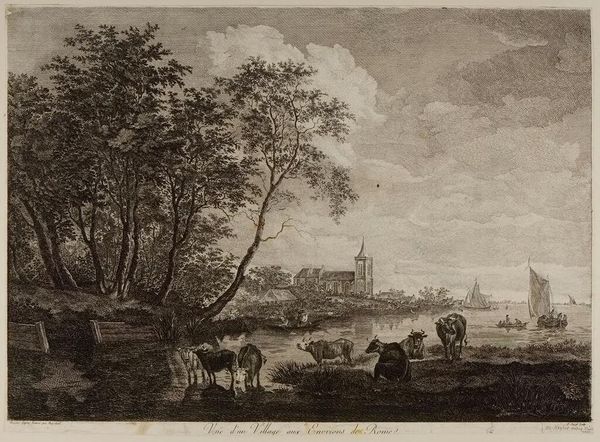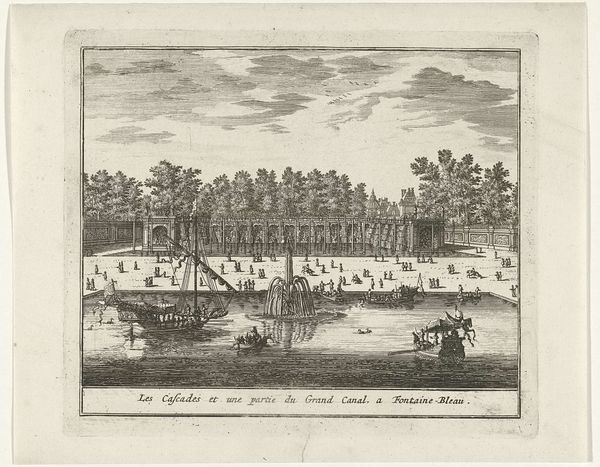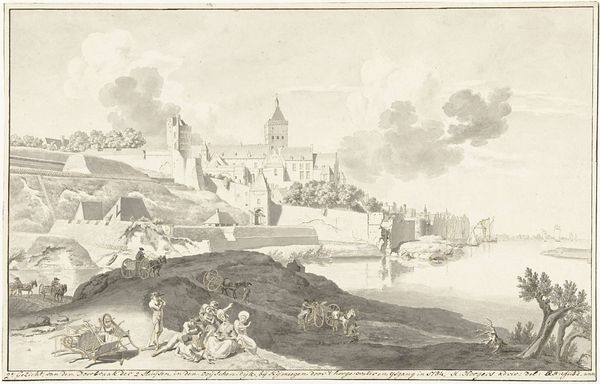
Aanval bij Ouderkerk aan de Amstel bij de Binnen-Bullewijk, 1787 1790
0:00
0:00
etching, engraving
#
dutch-golden-age
#
etching
#
old engraving style
#
landscape
#
history-painting
#
engraving
Dimensions: height 400 mm, width 540 mm
Copyright: Rijks Museum: Open Domain
Cornelis Brouwer created this print of an attack near Ouderkerk aan de Amstel in 1787. It’s made with etching and engraving, which are both printmaking techniques involving metal plates. The image is all about line, created by the incised marks in the metal. First, the plate would be covered in a waxy ground, and the design drawn through it with a needle. Acid is then applied, biting away the exposed metal. Engraving involves directly cutting the plate with a tool called a burin. Both processes demand precision and control. The depth and spacing of lines determine the tones in the final print. Consider the labor involved. Each impression requires inking the plate, carefully positioning the paper, and running it through a press. In Brouwer’s time, prints like these were a primary means of disseminating information, offering a window onto contemporary events. It is a stark contrast to our contemporary moment, when images are effortlessly reproduced and shared. The act of looking closely at this print brings us closer to the labor-intensive processes of image-making in the past, before digital media took over.
Comments
No comments
Be the first to comment and join the conversation on the ultimate creative platform.
